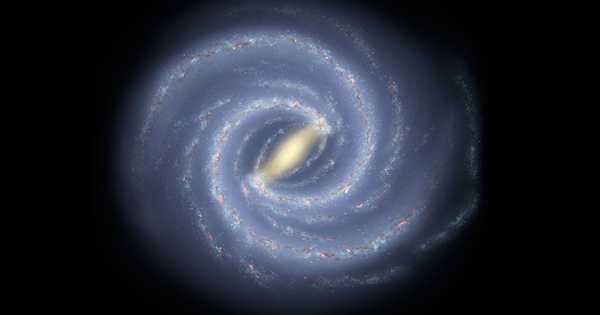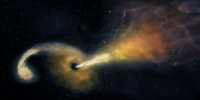From the inside, determining the structure of our galaxy, the Milky Way, is extremely difficult. However, with a spate of new findings, telescopes working at under-explored wavelengths are beginning to overcome this. The most recent discovery is a wavy filament of cold, dense gas running for at least 6,000 light-years toward the galactic center, which might represent the galaxy’s first known “feather,” a feature observed in other spiral galaxies. Astronomers speculate that the odd structure might represent a subbranch of the galaxy’s Norma arm, or a “feather” linking the Norma arm with the 3-kpc arm, the galaxy’s deepest arm yet identified, as described in The Astrophysical Journal.
Many other spiral galaxies can be seen considerably more clearly than our own, and astronomers have developed a classification system for the structures that emerge from spiral arms, designating to them as branches, splinters, or feathers depending on their angle or form. According to the findings of the new paper’s authors, the Milky Way, like many dinosaurs, appears to have feathers (at least this one). The finding, rather than being fashioned like a bird’s feather, has a pattern that resembles a sinusoidal wave, prompting them to name it Gangotri Wave, after the Ganges River’s glacier.

Gangotri is a star between 6,000 and 13,000 light-years away from the Galactic Center and resides within 17,000 light-years of it. It estimated that its total mass is at least 9 million times that of the Sun.
Gangotri’s course calculated by tracing carbon monoxide through the sky, which been done by various sky survey programs. CO makes up a minuscule fraction of Gangotri’s mass, and even less with the carbon-13 molecule whose velocity monitored, but the gas serves as a tracer for the more prevalent but harder to detect hydrogen and helium.
Although more mapping of Gangotri is needed to prove its real status, the research states, “the filament being a bone/spine can be ruled out, given such characteristics, by definition, are tightly connected with the spiral arms.”
Gangotri, on the other hand, stretches well beyond Norma and most likely reaches the 3-kpc arm, providing a link between the two. Other neighboring spiral galaxies, particularly barred spirals like our own, feature interarm spurs like ours. Despite their regularity, there is no consensus on what causes them.
Our improved ability to track the motions of stars and the positions of gas clouds has revealed some of the smaller galaxies that merged into the Milky Way to form it into what it is today. Astronomers have discovered an additional arm inside our galaxy, as well as a “splinter” or “spur” that extends from the Sagittarius Arm and includes celestial wonders like the Eagle Nebula, which is home to the stunning Pillars of Creation.














